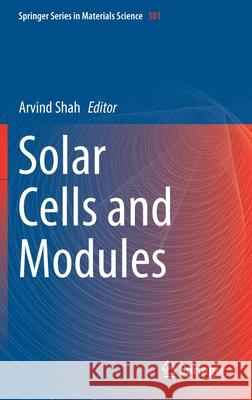Solar Cells and Modules » książka



(netto: 576,41 VAT: 5%)
Najniższa cena z 30 dni: 578,30 zł
ok. 22 dni roboczych
Bez gwarancji dostawy przed świętami
Darmowa dostawa!
Table of Contents
1. Introduction
1.1. Photovoltaics: potential and orders of magnitude
1.2. Photovoltaics: a choice of technology
1.3. Photovoltaics: Technology evolution
1.4. Photovoltaics: Manufacturing chain and efficiency increases
1.5. Photovoltaics: Impact of technology on energy pay-back time
1.6. Beyond silicon single-junction solar cells.
1.7. Building integrated photovoltaics.1.8. PV in future energy systems
1.9. References
2. Solar Spectra
2.1. Interaction of sunlight and the earth’s atmosphere
2.2. Albedo
2.3. Indoor lighting
2.4. “Lux” as a unit of light measurement
2.5. Moonlight
2.6. Irradiance and irradiation
2.7. References
3. Solar Cells: Basics
Preamble: Some basic terms from semiconductor physics
3.1. The photovoltaic effect: Interaction of light and matter
3.2. Conversion of light into electricity by a diode
3.3. Separation of electrons and holes: the solar cell as diode
3.4. Solar cell characteristics, equivalent circuits and key parameters
3.5. Solar cell efficiency limits
3.6. Spectral Response and Quantum Efficiency in Solar cells3.7. References
4. Solar Cells: Optical and Recombination Losses
4.1. Optical losses
4.2. Recombination losses
4.3. References
5. Crystalline silicon solar cells: Homojunction cells
5.1. Production of silicon wafers and solar cells
5.2. Cell processing for the Al-BSF cell
5.3. PERC cell (Passivated Emitter Rear Cell)
5.4. Other Homojunction cell concepts
5.5. References
6. Amorphous silicon solar cells
6.1. Amorphous silicon: deposition method and layer properties
6.2. Amorphous silicon solar cells
6.3. Microcrystalline silicon solar cells
6.4. References
7. Crystalline silicon solar cells: Heterojunction (HJT) cells
7.1. Introduction
7.2. Cell Structure
7.3. n- and p-type Wafers
7.4. Cell Process Steps
7.5. Temperature Coefficient of HJT Cells
7.6. Levelized Cost of Electricity (LCOE) of HJT cells
7.7. References
8. CdTe and CuInGaSe2 thin-film solar cells
8.1. Thin-film polycrystalline materials
8.2. CIGS solar cells
8.3. CdTe/CdS solar cells
8.4. Flexible thin-film solar cells
8.5. In-line fabrication
8.6. Performance under critical conditions
8.7. Environmental aspects
8.8. References
9. Solar Module technology
9.1. Electrical layout of solar modules
9.2. Module architectures, materials and processes
9.3. Module testing, reliability and lifetime
9.4. References
10. Module deployment and energy rating
10.1. Preliminary remarks
10.2. From power rating to energy rating
10.3. Three relevant exceptions
10.4. Energy losses and failure modes
10.5. Simulation and monitoring: energy yield measurement
10.6. References
11. Solar photovoltaics on land, water, and buildings
11.1. Solar electricity for powering the word
11.2. Solar on land
11.3. Solar on water
11.4. Solar on buildings
11.5. Solar in developing countries
11.6. Solar everywhere
11.7. References
12. Solar PV Systems
12.1. Overview Solar PV Systems
12.2. The solar generator
12.3. Off-grid PV systems
12.4. Grid-connected PV systems12.5. Explanation of Symbols
12.6. References
13. Photovoltaics in the future energy system
13.1. Market development13.2. Regulatory issues
13.3. Sustainability
13.4. System integration
13.5. References
This book gives a comprehensive introduction to the field of photovoltaic (PV) solar cells and modules. In thirteen chapters, it addresses a wide range of topics including the spectrum of light received by PV devices, the basic functioning of a solar cell, and the physical factors limiting the efficiency of solar cells. It places particular emphasis on crystalline silicon solar cells and modules, which constitute today more than 90 % of all modules sold worldwide. Describing in great detail both the manufacturing process and resulting module performance, the book also touches on the newest developments in this sector, such as Tunnel Oxide Passivated Contact (TOPCON) and heterojunction modules, while dedicating a major chapter to general questions of module design and fabrication. Overall, it presents the essential theoretical and practical concepts of PV solar cells and modules in an easy-to-understand manner and discusses current challenges facing the global research and development community.
1997-2025 DolnySlask.com Agencja Internetowa
KrainaKsiazek.PL - Księgarnia Internetowa









